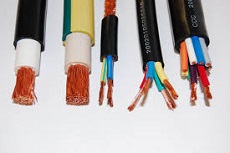
In business, taking care of your assets is vital to maintaining their longevity. Your electrical cables are no different. Though it may be easy to install cables and you may not think twice about them, protecting your cables is necessary to maintain their safety, integrity and performance. Taking care of them also means prolonging their lifetime and having a better chance of avoiding any issues that could sneak up on you before you realize what is happening.
In order to protect your cables, electrical conduits are used. Depending on the need, conduits made of plastic, metal or fiber that are either rigid or flexible will protect the cables and electrical wiring.
The main types of electrical cables include: Rigid type Metal Conduit (RMC) or Galvanized Rigid Conduits, Electrical tubing (EMT) and Liquid tight and flexible conduit (LFMC). The Rigid type Metal Conduit is the heaviest and thickest option and protects your cables from being hit. EMT is best in situations prone to corrosion because it is rust proof and corrosion resistant. A Liquid tight and flexible conduit (LFMC), on the other hand, has a covering that is liquid tight and sunlight resistant and is most useful for locations that are prone to dust and moisture. In addition to knowing primary advantages, it is also important to be aware of the disadvantages of different fittings. For example, RMC are most costly and may require specific tools because of the structure. With a thorough evaluation of your options and adherence to the specific buildings codes and ‘National Electrical Code’, you can take the right steps to ensure your cables are protected.
As it is with any part of business, it pays off to be proactive and preventative rather than reactive. Businesses which operate in “risky” environments – mining, drilling, robotics, refining, power generating, rail rolling…etc. – should be especially cautious and take their cables particularly seriously. In this case, these businesses should aim to use electrical conduit systems and fittings of high quality and reliability, like the ones offered by ABB.
The applications for these conduits range from commercial to industrial to residential environments. Instead of being concerned about your cables when there is dampness, dirt or even extreme temperatures, a certain conduit will be the best fit depending on the environment and usage. For a public building, for example, there are certain standards that need to be met in order to ensure safety in case of fire. This requires flame-retardant cable protection. In construction areas, on the other hand, it is required to have high levels of impact resistance, such as that offered by RMC.
The dangers of not properly or poorly protecting your cables range from safety concerns to loss of revenue, the latter being something any business can understand the severity of. Protecting your cables reduces electrical noise and lowers electromagnetic radiation. Furthermore, it also protects machinery and people in addition to the cables themselves.
Risk and reward is a very real concept in business. But when it comes to protecting your cables and the environment that you are in, it is always better to be on the safe side.
Related posts:






